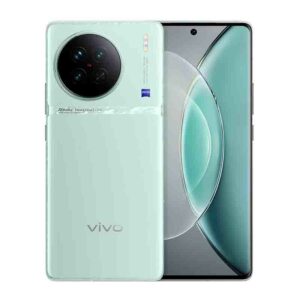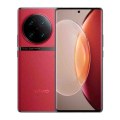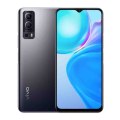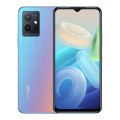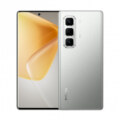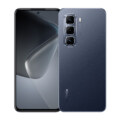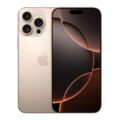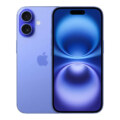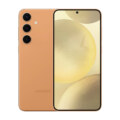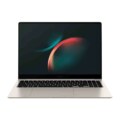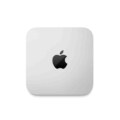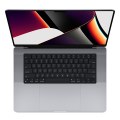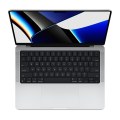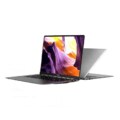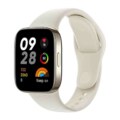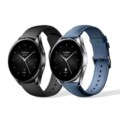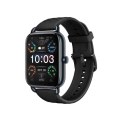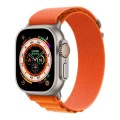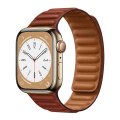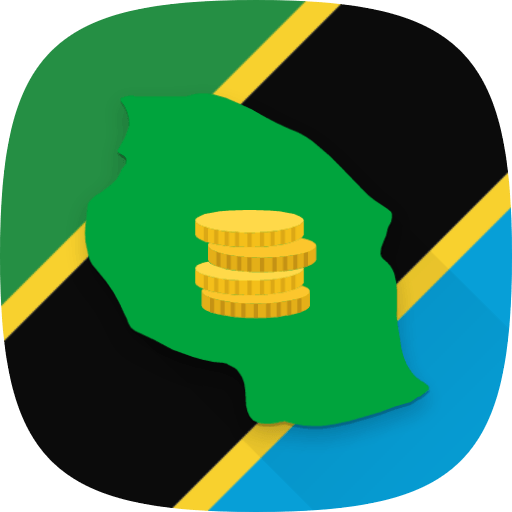Vivo X90s
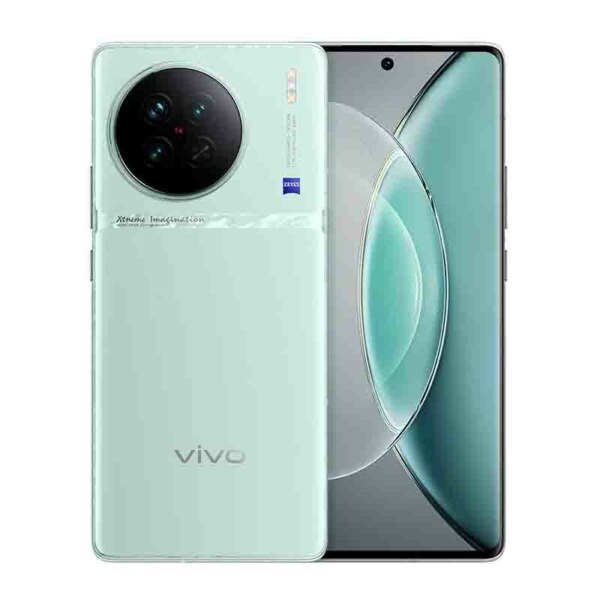

-
CPU: Octa-core (1x3.35 GHz Cortex-X3 & 3x3.0 GHz Cortex-A715 & 4x2.0 GHz Cortex-A510)
-
RAM: 8/12 GB
-
Storage: 256/512 GB
-
Display: AMOLED, 6.78 inches
-
Camera: Triple 50 MP, 12 MP, 12 MP
-
OS: Android 13
The Vivo X90s features a 6.78-inch AMOLED display with a 120Hz refresh rate and HDR10+. It is equipped with the MediaTek Dimensity 9200+ processor, up to 12GB RAM, and 512GB storage. The phone has a triple camera setup, including a 50MP wide lens, a 12MP telephoto lens, and a 12MP ultrawide lens. It also has a 32MP front camera. The device comes with a 4810 mAh battery and supports 120W wired charging. Additionally, it offers IP54 water and dust resistance.
Disclaimer. We can not guarantee that the information on this page is 100% correct. Read more
Vivo X90s Specs
General
-
Device TypeBar
-
ModelX90s
-
Announced2023, June
-
Released2023, June
-
StatusAvailable
Design
-
Type Design Type called form factor refers to a mobile phone's size, shape, and style as well as the layout and position of major components of phone. There are three major form factors seen in mobile phones => bar phones, folding phones and sliding phones.Bar
-
Dimensions164.1 x 74.4 x 8.5 mm or 8.9 mm
-
Weight197.5 / 201.5 / 202.2 / 203.5 g (6.98 oz)
-
ProtectionGlass front, glass back or eco leather back, IP64 dust/water resistant
-
ColorsBlack, White, Red, Green
Network
-
2G NetworkYes
-
3G NetworkYes
-
4G NetworkYes
-
5G NetworkYes
-
SIM SIM (Subscriber Identity Module) is a small card that contains mobile network subscriber's account information. This allows the phone using the card to attach to a mobile network. The SIM card is most commonly associated with GSM and UMTS mobile networks. Moving a SIM card from one phone to another allows a subscriber to switch mobile phones without having to contact their mobile network carrier. SIM cards can also be used by a phone to store limited amounts of data, such as phone numbers and text messages.Nano SIM
-
Dual SIMYes, Dual SIM (Nano-SIM, dual stand-by)
Display
-
Display Type Display Technology => A number of display technologies and types used in mobile phones => TFT (Thin Film Transistor), IPS (In-Place Switching), OLED (Organic Light Emitting Diode), AMOLED (Active-Matrix Organic Light-Emitting Diode), Super AMOLED (an even advanced version of AMOLED), Resistive Touchscreen (Resistive touchscreens contain two layer of conductive material with a very small gap between them which acts as a resistance), Capacitive Touchsceen (Capacitive touchscreen technology consists of a layer of glass coated with a transparent conductor)AMOLED
-
Size6.78 inches, 111.0 cm2 (~90.9% screen-to-body ratio)
-
Resolution1260 x 2800 pixels
-
Display Colors Display Colors is refers to the number of different shades of colors that the screen is capable of displaying => 64K colors, 256K colors and 16 million colors, Obviously 16M is highest available range of colors and better than others.1B colors
-
Pixel Density Pixel Density (PPI) is refers to the concentration of pixels on a particular display, measured in pixels per inch (ppi). Pixel density is calculated by dividing the diagonal pixel resolution of a display by its diagonal size, higher pixel density better display quality.453 ppi density
-
Touch ScreenYes
-
Features1B colors, 120Hz, HDR10+, 1300 nits (peak)
Media
-
FM RadioNo
-
Earphone JackNo
Camera
-
Camera Set The total number of lenses contained within the Rear or Main camera systems. Referred to as Single, Dual or Triple.Triple Cameras
-
Main Camera Camera is able to capture photographs and usually videos, The most important characteristics of a camera are the resolution (measured in megapixels), lens focus type (fixed or automatic), higher megapixel cameras are known to capture higher quality photos, but not always a good measurement of the photos quality.50 MP, f/1.8, (wide), 1/1.49", 1.0µm, PDAF, Laser AF, OIS
-
2nd Camera12 MP, f/2.0, 50mm (telephoto), 1/2.93", 1.22µm, AF, 2x optical zoom
-
3rd Camera12 MP, f/2.0, 16mm (ultrawide), 1/2.93", 1.22µm, AF
-
Camera Video4K@30/60fps, 1080p@30/60fps, gyro-EIS
-
FeaturesZeiss optics, Zeiss T* lens coating, Pixel Shift, HDR, Panorama
-
Flash Flash Light => There is commonly two types of flash lights are used in camera mobile phones, LED Flash (LED flash offers lower power consumption with drive circuitry that takes up very little room, LEDs can be strobed faster than any other light source), Xenon Flash (xenon flash produces an extremely intense full-spectrum white light for a very short duration)Dual-LED dual-tone Flash
-
Selfie Set The total number of lenses contained within the Selfie camera systems. Referred to as Single, Dual or Triple.Single Camera
-
Selfie Camera32 MP, f/2.5, 24mm (wide), 1/2.8", 0.8µm
-
Selfie Video1080p@30/60fps
-
FeaturesHDR
Software
-
OS OS => Every computer system run on a base software called Operating System (OS). Operating System controls all basic operations of the computer (such as smartphone, PDAs, tablet computers and other handheld devices). The Operating System allows the user to install and run third party applications (apps), apps are used to add new functionality to the device.Android 13
-
User Interface UI or user interface of a device is the look and feel of the on-screen menu system. How it works, its color scheme, how it responds to button presses, all of these things are part of the user interface.OriginOS 3
Hardware
-
Chipset Chipset is a group of integrated circuits designed to perform one or a more dedicated functions, often with real time computing constraints, Popular smartphones are equipped with more advanced embedded chipsets that can do many different tasks depending on their programming.Mediatek Dimensity 9200+ (4 nm)
-
CPU CPU (Central Processing Unit) mostly known as processors, CPU processes instructions in order to carry out certain functions that make your device operate properly. Processors are often described as the brain of computers, smartphones and tablets, Smartphones and tablets rely on processors to carry out their every task, Processors are an incredibly important factor in selecting any type of computing device, including your smartphone.Octa-core (1x3.35 GHz Cortex-X3 & 3x3.0 GHz Cortex-A715 & 4x2.0 GHz Cortex-A510)
-
GPU GPU (Graphics Processing Unit) is a single-chip processor designed to rapidly manipulate and alter memory to accelerate the creation of images in a frame buffer intended for output to a display, This includes things such as lighting effects, object transformations, and 3D motion.Immortalis-G715 MC11
-
RAM RAM (Random Access Memory) is a type of computer memory that can be accessed randomly, any byte of memory can be accessed without touching the preceding bytes that allows information to be stored and accessed quickly from random locations. RAM is the most common type of memory found in computer systems, smartphones, tablets and other electronic devices.8/12 GB
-
Internal Storage Internal Storage is a data storage space (flash memory) mostly used in smartphones, tablets and other electronic devices where operating system, apps, music, photos, videos, files and other user data Is stored.256/512 GB
Connectivity
-
Bluetooth Bluetooth is a wireless communications technology for exchanging data between mobile phones, headsets, computers and other network devices over short distances without wires, Bluetooth technology was primarily designed to support simple wireless networking of personal consumer devices.5.3, A2DP, LE, aptX HD
-
Wi-fi Wi-Fi is a popular wireless networking technology using radio waves to provide high-speed network connections that allows devices to communicate without cords or cables, Wi-Fi is increasingly becoming the preferred mode of internet connectivity all over the world.Wi-Fi 802.11 a/b/g/n/ac/6/7, tri-band
-
Wi-fi Hotspot Wi-fi Hotspot is a mobile feature allows your phone to share its cellular data connection by creating a Wi-Fi network.
-
USBUSB Type-C 2.0, OTG
-
GPS GPS The Global Positioning System is a satellite-based radio navigation system, GPS permits users to determine their position, velocity and the time 24 hours a day, in all weather, anywhere in the world, In order to locate your position, your device or GPS receiver must have a clear view of the sky.Yes, GPS (L1+L5), GLONASS (G1), BDS (B1I+B2a+B2c), GALILEO (E1+E5a), QZSS (L1+L5), NavIC (L5)
-
NFC NFC (Near field communication) is a set of standards for smartphones and similar devices to establish peer-to-peer radio communications with each other by touching them together or bringing them into proximity, usually no more than a few inches.
Data
-
GPRS GPRS (General Packet Radio Service) is a packet oriented mobile data service on the 2G and 3G cellular communication system's global system for mobile communications (GSM), Generally, GPRS is used for the purpose of wireless data transfer, such as sharing pictures and videos or browsing the Internet via a mobile phone connection.
-
EDGE EDGE (Enhanced Data GSM Environment) is a wireless network technology generally considered the next step in the 2G network offers data transfer rates up to four times faster than ordinary GSM networks, Generally, EDGE is used for the purpose of wireless data transfer, such as sharing pictures and videos or browsing the Internet via a mobile phone connection.
-
SpeedHSPA, LTE-A, 5G
Battery
-
Battery Type Battery Type => Cell phones run on various kinds of batteries depending on the manufacturer, phone size or shape and features. There are basically four types of cell phone batteries => Lithium Polymer, Lithium Ion, Nickel Metal Hydride and Nickel Cadmium.Li-Poly (Lithium Polymer)
-
Capacity Battery Capacity is a measure (typically in Amp-hr) of the charge stored by the battery, and is determined by the mass of active material contained in the battery. The battery capacity represents the maximum amount of energy that can be extracted from the battery under certain conditions.4810 mAh
-
PlacementNon-removable
Looking to buy the Vivo X90s in Tanzania? Purchase it at the best price on the Price in Tanzania Marketplace. If you have a Vivo X90s to sell, list it with us to reach buyers across Tanzania. Click below to buy or sell your Vivo X90s today. Visit Price in Tanzania
